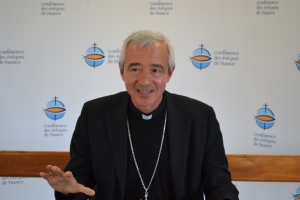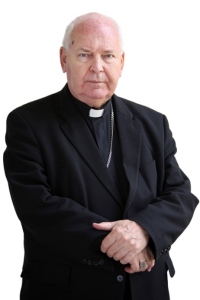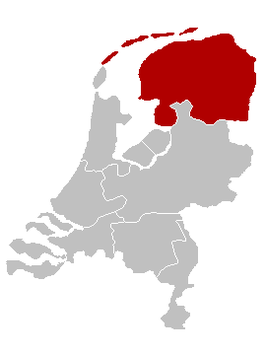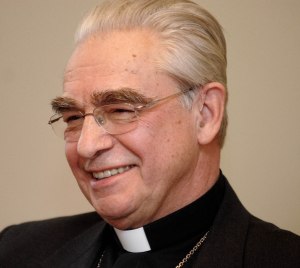Another year nears its end, the seventh of this blog, which is always a good opportunity to look back, especially at what has appeared here in the blog over the course of 2016. I have grouped things loosely in various categories, so as to give an impression of cohesion.
 Pope Francis at work
Pope Francis at work
In Rome, and despite turning 80 this year, Pope Francis kept up the pace, introducing several changes, expected and unexpected. First, in January, he issued a decree which opened the rite of foot washing on Maundy Thursday also for women. I reflected on it here.
On Ash Wednesday, the Holy Father sent out 1,000 missionaries of mercy, among them 13 Dutch priests, as part of the ongoing Holy Year of Mercy.
Pope Francis commented on the question of female deacons, which led to much debate, at least in Catholic social media. I also shared my thoughts.
A smaller debate revolved around an instruction from the Congregation for the Doctrine of the Faith, approved by the Pope, about Christian burial.
The reform of the Curia also continued, first with the creation of the Dicastery for the Laity, the Family and Life and the appoinment of Dallas Bishop Kevin Farrell as its first prefect; and then with the creation of the Dicastery for the Promotion of Integral Human Development, for which the Pope picked Cardinal Peter Turkson as head.
 Pope Francis also added to the College of Cardinals, as he called his third consistory, choosing seventeen new cardinals from all over the world.
Pope Francis also added to the College of Cardinals, as he called his third consistory, choosing seventeen new cardinals from all over the world.
Towards the end of the year, and following the end of the Holy Year of Mercy, Pope Francis issued an Apostolic Letter about the absolution from the sin of abortion, a faculty now extended to all priests.
The Pope abroad
Pope Francis made several visits abroad this year. To Cuba and Mexico, to Greece, to Armenia, to Poland, to Georgia and Azerbaijan, but the last one received the most attention here. For two days, Pope Francis put ecumenism in the spotlight during his visit to Sweden. Announced in January as a one-day visit, a second day was added in June. In October, the Nordic bishops previewed the visit in a pastoral letter, which I published in English.
The abuse crisis
Still here, and unlikely to go completely away in the next years or decades, the abuse crisis continues to haunt the Church. in February there were shocked reactions to comments made by a prelate during a conference on how bishops should handle abuse allegations. I tried to add some context here. In the Netherlands there was indignation when it became clear that a significant number of abuse cases settled out of court included a secrecy clause, preventing victims from speaking negatively about the Church institutions under whose care they suffered abuse. In April, the annual statistics of abuse cases processed and compensation paid out were released.
Amoris laetitia
In April Amoris laetitia was released, the Post-Synodal Exhortation that was the fruit of the two Synod of Bishops assemblies on the family. Cardinal Eijk, the Dutch delegate to the assemblies, offered his initial thoughts about the document, followed by many other bishops.
 While the document was broadly lauded, an ambuguous footnote led to much discussion. In November, four cardinals publised a list of dubia they presented to the Pope, but which received no answer. Citing the clear uncertainty about certain parts of Amoris laetitia, visible in the wide range of conclusions drawn, the cardinals respectfully asked for clarification, which they will most likely not be getting, at least not in the standard way.
While the document was broadly lauded, an ambuguous footnote led to much discussion. In November, four cardinals publised a list of dubia they presented to the Pope, but which received no answer. Citing the clear uncertainty about certain parts of Amoris laetitia, visible in the wide range of conclusions drawn, the cardinals respectfully asked for clarification, which they will most likely not be getting, at least not in the standard way.
The local churches
There were many more and varied events in local churches in the Netherlands and beyond. Theirs is a very general category, aiming to showcase some of the more important and interesting developments in 2016.
In January, the Belgian bishops elected then-Archbishop Jozef De Kesel as their new president. At the same time, Cardinal Wim Eijk announced that he would not be available for a second term as president of the Dutch Bishops’ Conference. In June, Bishop Hans van den Hende was chosen to succeed him.
 Bishop Antoon Hurkmans retired as Bishop of ‘s-Hertogenbosch, and in January he sent his final message to the faithful of his diocese, asking for unity with the new bishop. In April, rumours started floating that the bishops had suggested Bishop Hurkmans as new rector of the Church of the Frisians in Rome.
Bishop Antoon Hurkmans retired as Bishop of ‘s-Hertogenbosch, and in January he sent his final message to the faithful of his diocese, asking for unity with the new bishop. In April, rumours started floating that the bishops had suggested Bishop Hurkmans as new rector of the Church of the Frisians in Rome.
The Dioceses of Rotterdam and Groningen-Leeuwarden celebrated the 60th anniversary of their establishment.
On Schiermonnikoog, the Cistercian monks, formerly of Sion Abbey, found a location for their new monastery.
The Dutch and Belgian bishops announced a new translation of the Lord’s Prayera new translation of the Lord’s Prayer, to be introduced on the first Sunday of Advent.
 A photograph of the cathedral of Groningen-Leeuwarden started appearing across the globe as a stock photo in articles about the Catholic Church. It continues to do so, as I saw it appear, some time last week, in an advert for a concert by a Dutch singer.
A photograph of the cathedral of Groningen-Leeuwarden started appearing across the globe as a stock photo in articles about the Catholic Church. It continues to do so, as I saw it appear, some time last week, in an advert for a concert by a Dutch singer.
Speaking in Lourdes in May, Roermond’s Bishop Frans Wiertz spoke open-heartedly about his deteriorating Eyesight.
In June, Fr. Hermann Scheipers passed away. The 102-year-old priest was the last survivor of Dachau concentration camp’s priest barracks.
In that same month, the nestor of the Dutch bishops marked the 75th anniversary of his ordination to the priesthood. Bishop Huub Ernst is 99 and currently the sixth-oldest bishop in the world.
In Belgium, the new Archbishop of Mechelen-Brussels closed down the Fraternity of the Holy Apostles, erected by his predecessor, to the surprise of many.
Bishop Patrick Hoogmartens of Hasselt received a personal message and blessing from Pope Francis on the occasion of the 18th Coronation Feasts held in Hasselt in the summer.
 The annual procession in honour of St. Willibrord in Utrecht was criticised this year after the archbishop chose to limit its ecumenical aspect. I shared some thoughts here.
The annual procession in honour of St. Willibrord in Utrecht was criticised this year after the archbishop chose to limit its ecumenical aspect. I shared some thoughts here.
In Norway, Trondheim completed and consecrated a new cathedral. English Cardinal Cormac Murphy-O’Connor was sent to represent the Holy Father at the event.
The retired archbishop of Mechelen-Brussels, André-Joseph Léonard, was heard from again when a new book featured his thoughts about never having been made a cardinal, unlike his immediate predecessors and, it turned out at about the time of the book’s publication, is successor.
At the end of the year, Berlin was hit by terrorism as a truck plowed through a Christmas market, killing 12 and wounding numerous others. Archbishop Heiner Koch offered a poetic reflection.
The Dutch Church abroad
In foreign media, the Catholic Church in the Netherlands also made a few headlines.
 In September, Cardinal Eijk was invited to speak at the annual assembly of the Canadian bishops, sharing his experiences and thoughts concerning the legalisation of assisted suicide. In the wake of that meeting, he also floated the idea that the Pope could write an encyclical on the errors of gender ideology.
In September, Cardinal Eijk was invited to speak at the annual assembly of the Canadian bishops, sharing his experiences and thoughts concerning the legalisation of assisted suicide. In the wake of that meeting, he also floated the idea that the Pope could write an encyclical on the errors of gender ideology.
in Rome, 2,000 Dutch pilgrims were met by Pope Francis, who spoke to them about being channels of mercy.
The new Dutch translation of the Our Father also sparked fears in some quarters that the bishops were leading everyone into heresy, leading to many faithful revolting against the new text. The truth was somewhat less exciting.
Equally overexcited was the report of empty parishes and starving priests in the Netherlands. I provided some necessary details here.
In Dutch
While my blog is written in English, there have also been three blog posts in Dutch. All three were translations of texts which were especially interesting or important. The first was my translation of the joint declaration of Pope Francis and Patriarch Kirill, an important milestone in ecumenical relations between the Catholic and the Russian Orthodox Churches.
 Then there was the headline-making address by Cardinal Robert Sarah at the Sacra Liturgia Conference in London, in which the cardinal invited priests to start celebrating ad orientem again. But the text contained much more than that, and remains well worth reading.
Then there was the headline-making address by Cardinal Robert Sarah at the Sacra Liturgia Conference in London, in which the cardinal invited priests to start celebrating ad orientem again. But the text contained much more than that, and remains well worth reading.
Lastly, I provided translations of all the papal addresses and homilies during the Holy Father’s visit to Sweden. I kept the post at the top of the blog for a while, as a reflection of its importance for Dutch-speaking Christians as well.
A thank you
Twice in 2016 I asked my readers to contribute financially to the blog. In both instances several of you came through, using the PayPal button in the sidebar to donate. My gratitude to you remains.
2016 in appointments
Obituary
As every year, there is also death. Notewrothy this year were the following:
- 26 March: Bishop Andreas Sol, 100, Bishop emeritus of Amboina.
- 31 March: Georges-Marie-Martin Cardinal Cottier, 93, Cardinal-Priest of Santi Domenico e Sisto, Pro-Theologian emeritus of the Prefecture of the Papal Household.
- 16 May: Giovanni Cardinal Coppa, 90, Cardinal-Deacon of San Lino, Apostolic Nuncio emeritus to the Czech Republic.
- 26 May: Loris Cardinal Capovilla, 100, Cardinal-Priest of Santa Maria in Trastevere, Archbishop-Prelate emeritus of Loreto.
- 9 July: Silvano Cardinal Piovanelli, 92, Cardinal-Priest of Santa Maria della Grazie a Via Trionfale, Archbishop emeritus of Firenze.
- 2 August: Franciszek Cardinal Macharski, 89, Cardinal-Priest of San Giovanni a Porta Latina, Archbishop emeritus of Kraków.
- 18 August: Bishop Jan Van Cauwelaert, 102, Bishop emeritus of Inongo.
- 13 November: Bishop Aloysius Zichem, 83, Bishop emeritus of Paramaribo.
- 21 November: Bishop Maximilian Ziegelbauer, 93, Auxiliary Bishop emeritus of Augsburg.
- 14 December: Paulo Cardinal Arns, Cardinal-Priest of Sant’Antonio da Padova in Via Tuscolana, Archbishop emeritus of São Paulo, Protopriest of the College of Cardinals.

 The Diocese of Roermond coincides with the province of Limburg and is located in the south-east of the Netherlands, wedged in between Belgium and Germany, bordering the Dutch (arch)dioceses of ‘s-Hertogenbosch and Utrecht, Hasselt and Liège in Belgium and Aachen and Münster in Germany. It shares much of its history with its neighbours, as it was first established in 1559 from territories belonging to Cologne and Liège. It was suppressed under Napoleon and re-established in 1840, again from Cologne and Liège. it has been a full diocese since 1853. The Catholic history, however, goes far further back, as the diocese also includes the city of Maastricht, which was the seat of a diocese as far back as 530.
The Diocese of Roermond coincides with the province of Limburg and is located in the south-east of the Netherlands, wedged in between Belgium and Germany, bordering the Dutch (arch)dioceses of ‘s-Hertogenbosch and Utrecht, Hasselt and Liège in Belgium and Aachen and Münster in Germany. It shares much of its history with its neighbours, as it was first established in 1559 from territories belonging to Cologne and Liège. It was suppressed under Napoleon and re-established in 1840, again from Cologne and Liège. it has been a full diocese since 1853. The Catholic history, however, goes far further back, as the diocese also includes the city of Maastricht, which was the seat of a diocese as far back as 530.
 Through Archbishop Jorge Carlos Patrón Wong, Rome has revealed a minimal number of seminarians that a seminary needs to be “a veritable training community”, La Croix
Through Archbishop Jorge Carlos Patrón Wong, Rome has revealed a minimal number of seminarians that a seminary needs to be “a veritable training community”, La Croix  n a circular letter to be read out in the parishes of his diocese next Sunday, Bishop Frans Wiertz of Roermond informs the faithful that he has asked Pope Francis to be allowed to retire on his 75th birthday on 2 December.
n a circular letter to be read out in the parishes of his diocese next Sunday, Bishop Frans Wiertz of Roermond informs the faithful that he has asked Pope Francis to be allowed to retire on his 75th birthday on 2 December.  Congratulations to Cardinal Adrianus Johannes Simonis, who yesterday celebrated the 60th anniversary of his ordination in Utrecht’s cathedral of St. Catherine. The 85 year-old cardinal was archbishop of Utrecht from 1983 to 2007 and his successor, Cardinal Willem Eijk, invited him to mark the milestone in his former cathedral, the mother church, in a way, of the entire Dutch Church province.
Congratulations to Cardinal Adrianus Johannes Simonis, who yesterday celebrated the 60th anniversary of his ordination in Utrecht’s cathedral of St. Catherine. The 85 year-old cardinal was archbishop of Utrecht from 1983 to 2007 and his successor, Cardinal Willem Eijk, invited him to mark the milestone in his former cathedral, the mother church, in a way, of the entire Dutch Church province. “In all these developments you always remained true to your motto, which you also quoted in your homily in this morning’s Eucharist: “Ut cognoscant te,” “That they may know you.” The goal of your entire priestly life was and still is that people will get to know and meet Christ, the Good Shepherd, who calls himself “the way, the truth and the life” (John 14:6). Through Him we come to the Father. In imitation of Jesus you sacrificed much to bring the people entrusted to your pastoral care to the full truth in the Risen Lord. We are and remain very grateful to you for that. Now that we are celebration the 60th anniversary of your ordination to the priesthood, we pray that the Lord may bless you abundantly.”
“In all these developments you always remained true to your motto, which you also quoted in your homily in this morning’s Eucharist: “Ut cognoscant te,” “That they may know you.” The goal of your entire priestly life was and still is that people will get to know and meet Christ, the Good Shepherd, who calls himself “the way, the truth and the life” (John 14:6). Through Him we come to the Father. In imitation of Jesus you sacrificed much to bring the people entrusted to your pastoral care to the full truth in the Risen Lord. We are and remain very grateful to you for that. Now that we are celebration the 60th anniversary of your ordination to the priesthood, we pray that the Lord may bless you abundantly.”
 The next bishop of Roermond should be a social media user, but is to stay in office for 15 years at most, a poll amongst priests of the Diocese of Roermond by newspaper
The next bishop of Roermond should be a social media user, but is to stay in office for 15 years at most, a poll amongst priests of the Diocese of Roermond by newspaper  There have been years when the changes were rather significant, but 2017 does not look to be one of those. At the start of the new year, three dioceses are without a bishop: Groningen-Leeuwarden in the Netherlands (map at right), Mainz in Germany and the Territorial Prelature of Trondheim in Norway. It is a safe bet that the first two will receive their new bishops in 2017, but Trondheim may well be left as it has been for the past seven years: without a bishop, and with the bishop of Oslo serving as Apostolic Administrator. But on the other hand, for a see that just built and consecrated its new cathedral, and which, like the rest of Norway, has seen a significant increase in Catholic faithful, this does not seem like a situation that will continue forever. So who knows what the year will bring.
There have been years when the changes were rather significant, but 2017 does not look to be one of those. At the start of the new year, three dioceses are without a bishop: Groningen-Leeuwarden in the Netherlands (map at right), Mainz in Germany and the Territorial Prelature of Trondheim in Norway. It is a safe bet that the first two will receive their new bishops in 2017, but Trondheim may well be left as it has been for the past seven years: without a bishop, and with the bishop of Oslo serving as Apostolic Administrator. But on the other hand, for a see that just built and consecrated its new cathedral, and which, like the rest of Norway, has seen a significant increase in Catholic faithful, this does not seem like a situation that will continue forever. So who knows what the year will bring. There are a few bishops who will reach the age of 75 in 2017, and thus will offer their resignation. In Germany, these are Bishop Friedhelm Hofmann of Würzburg on 12 May and Norbert Trelle (at left) of Hildesheim on 5 September. Joining them is Bishop Frans Wiertz of Roermond in the Netherlands. He will be 75 on 2 December, but I would not be surprised if his retirement will be accepted earlier, as the bishop has been struggling with eye-related health problems.
There are a few bishops who will reach the age of 75 in 2017, and thus will offer their resignation. In Germany, these are Bishop Friedhelm Hofmann of Würzburg on 12 May and Norbert Trelle (at left) of Hildesheim on 5 September. Joining them is Bishop Frans Wiertz of Roermond in the Netherlands. He will be 75 on 2 December, but I would not be surprised if his retirement will be accepted earlier, as the bishop has been struggling with eye-related health problems. In Rome, lastly, there will be no new consistory. Only four cardinals will reach the age of 80 and so cease to be electors. They are Audrys Backis, Archbishop emeritus of Vilnius, Lithuania (and former Nuncio to the Netherlands) (at right); Raymundo Damasceno Assis, Archbishop emeritus of Aparecida, Brazil; Attilio Nicora, Pontifical Legate to the Basilicas in Assisi, Italy; and Lluís Martínez Sistach, Archbishop emeritus of Barcelona, Spain. The number of cardinals who will be able to participate in a conclave will still be 116 at the end of next year, so there will be no need to bring their numbers up.
In Rome, lastly, there will be no new consistory. Only four cardinals will reach the age of 80 and so cease to be electors. They are Audrys Backis, Archbishop emeritus of Vilnius, Lithuania (and former Nuncio to the Netherlands) (at right); Raymundo Damasceno Assis, Archbishop emeritus of Aparecida, Brazil; Attilio Nicora, Pontifical Legate to the Basilicas in Assisi, Italy; and Lluís Martínez Sistach, Archbishop emeritus of Barcelona, Spain. The number of cardinals who will be able to participate in a conclave will still be 116 at the end of next year, so there will be no need to bring their numbers up. Pope Francis at work
Pope Francis at work Pope Francis also added to the College of Cardinals, as he called his
Pope Francis also added to the College of Cardinals, as he called his  While the document was broadly lauded, an ambuguous footnote led to much discussion. In November, four cardinals publised
While the document was broadly lauded, an ambuguous footnote led to much discussion. In November, four cardinals publised  Bishop Antoon Hurkmans retired as Bishop of ‘s-Hertogenbosch, and in January he sent
Bishop Antoon Hurkmans retired as Bishop of ‘s-Hertogenbosch, and in January he sent 
 The annual procession in honour of St. Willibrord in Utrecht was criticised this year after the archbishop chose to limit its ecumenical aspect. I shared some thoughts
The annual procession in honour of St. Willibrord in Utrecht was criticised this year after the archbishop chose to limit its ecumenical aspect. I shared some thoughts  In September, Cardinal Eijk was invited to speak at the annual assembly of the Canadian bishops,
In September, Cardinal Eijk was invited to speak at the annual assembly of the Canadian bishops,  Then there was the
Then there was the  It is true that the number of parishes in the Netherlands is decreasing. And it has been for some time now. But it is inaccurate to claim that parishes are shutting down. Rather, parishes are merging with their neighbours to create larger parish clusters or megaparishes. This happens in most Dutch dioceses, and it is an organisational change, virtually always triggered by financial reasons and the lack of priests. The exact form that these mergers take differs per diocese. In Groningen-Leeuwarden, where I live, the parishes are merging, but with local faith communities continuing to come together, sometimes without a church building of their own. Or so the diocese, and especially our former bishop, Msgr. de Korte, hopes. Priests are tasked to travel in their parishes to minister to the faithful. In the Archdiocese of Utrecht, the new megaparishes have socalled Eucharistic centers assigned, churches where Holy Mass is celebrated every Sunday, while other churches in the parish will host Mass less frequently. I have compared the two approaches, as promoted by Cardinal Wim Eijk (at right) and Bishop Gerard de Korte,
It is true that the number of parishes in the Netherlands is decreasing. And it has been for some time now. But it is inaccurate to claim that parishes are shutting down. Rather, parishes are merging with their neighbours to create larger parish clusters or megaparishes. This happens in most Dutch dioceses, and it is an organisational change, virtually always triggered by financial reasons and the lack of priests. The exact form that these mergers take differs per diocese. In Groningen-Leeuwarden, where I live, the parishes are merging, but with local faith communities continuing to come together, sometimes without a church building of their own. Or so the diocese, and especially our former bishop, Msgr. de Korte, hopes. Priests are tasked to travel in their parishes to minister to the faithful. In the Archdiocese of Utrecht, the new megaparishes have socalled Eucharistic centers assigned, churches where Holy Mass is celebrated every Sunday, while other churches in the parish will host Mass less frequently. I have compared the two approaches, as promoted by Cardinal Wim Eijk (at right) and Bishop Gerard de Korte,  The idea that priests may need to find jobs comes from
The idea that priests may need to find jobs comes from